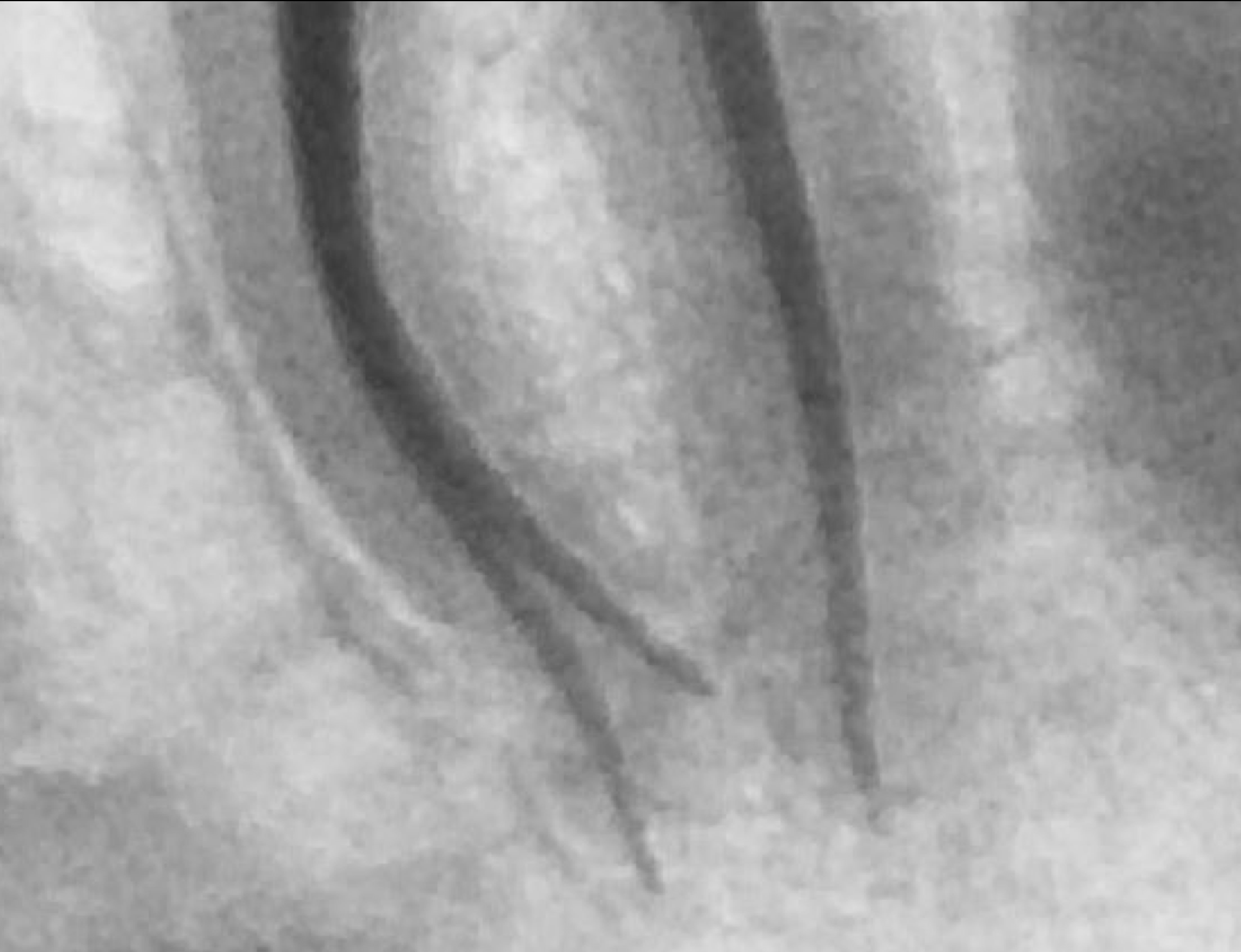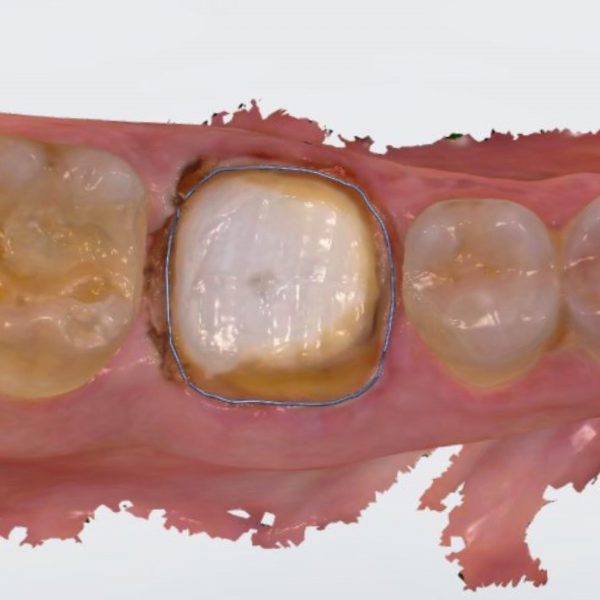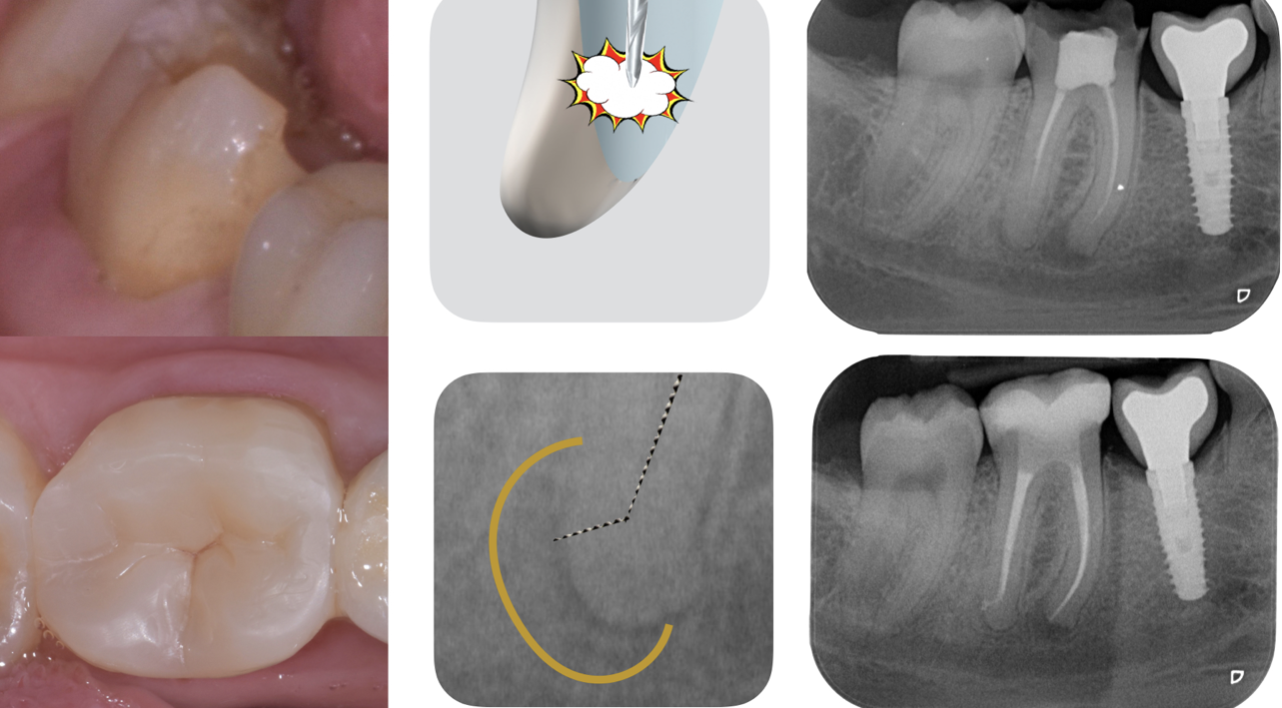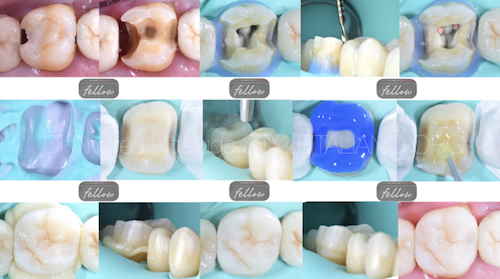
Two Appointments Endo Resto: a simplified workflow to make prosthodontics helpful to endodontics
03/09/2024
Fellow
Warning: Undefined variable $post in /var/www/vhosts/styleitaliano-endodontics.org/endodontics.styleitaliano.org/wp-content/plugins/oxygen/component-framework/components/classes/code-block.class.php(133) : eval()'d code on line 2
Warning: Attempt to read property "ID" on null in /var/www/vhosts/styleitaliano-endodontics.org/endodontics.styleitaliano.org/wp-content/plugins/oxygen/component-framework/components/classes/code-block.class.php(133) : eval()'d code on line 2
The high predictability of our treatments allows us to organize endodontics appointments so that in just two sessions the patient can get a definitive restoration. In fact, the old concept envisaged several operational sessions, in some cases leading to the finalization of the work no sooner than 45 days.
This new concept provides for the delivery of the final restoration within 14 days, guaranteeing our patient significant biological, economic and time savings. The professional, on the other hand, saves in terms of hourly cost of the chair (number of appointments) and material used, also making endodontic treatment more comfortable and simple thanks to the preventive occlusal reduction.
Once the need for root canal therapy has been established, we begin with an accurate occlusal reduction, checking the maintenance of the correct interarch prosthodontic spaces (depending on the type of material chosen for the restoration) even before the start of endodontic therapy.
Afterwards, the previous restorations are removed, if present, and we start with the first phase of marginal decayed tissue removal, taking care not to enter the chamber, while initially leaving contaminated tissue in its proximity: the selective removal of infected marginal tissue allows us to isolate correctly at a later time without damaging the integrity of the dam, allowing us to save time and material; the deferred removal of caries allows us to isolate the operating field in a dry environment free from any bleeding, making the subsequent endodontic marginal seal easier thanks to the use of the liquid dam.
This protocol requires absolute isolation from "conservative" imprinting, therefore several teeth will be isolated at a time and the element to be treated will be "sealed" thanks to the use of a liquid dam, in order to avoid the possibility of passage of sodium hypochlorite to the oral cavity (1-2).
Once the dam has been positioned, we remove the decayed tissue entirely and proceed with the chamber opening and the localization of the canal orifices. Once the endodontic phase has been completed and the access cavity has been adequately cleansed, the liquid dam is removed and, if necessary, we proceed with the relocation of the margins and with the build-up of the tooth (3-4-5-6). Having already reduced the occlusal table, the preparation of the tooth is very rapid, limiting itself to the creation of the interproximal boxes and its finishing and polishing (6-7). After that we remove the isolation, check the prosthodontic space again, take a precision impression (analog or digital) and finally, after spot etching and adhesion, we place the temporary filling with polymerizable pmma (e.g. Telio - Ivoclar) in order to avoid mesiodistal movements of adjacent teeth as well as extrusion of the treated element.
The following week, once the prosthodontic overlay has been made (composite, lithium disilicate or hybrid, depending on the therapeutic indication), we easily remove the temporary filling and proceed again with the isolation of the operating field and finally bond the definitive restoration, as per protocol, with adhesive technique (6). Now all we have to do is refine and polish the prosthodontic margins, if necessary touch up the occlusion and dismiss the patient.
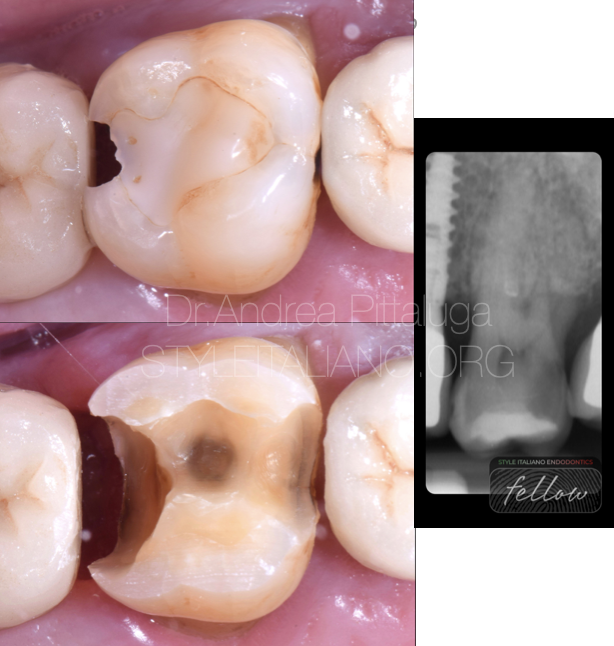
Fig. 1
Preoperative x-ray and image
Disassembling of old restorations, marginal caries removal and preoperative cusp reduction

Fig. 2
Access cavity and absolute isolation aided by the use of liquid dam.
Body shaping and master-cone fit
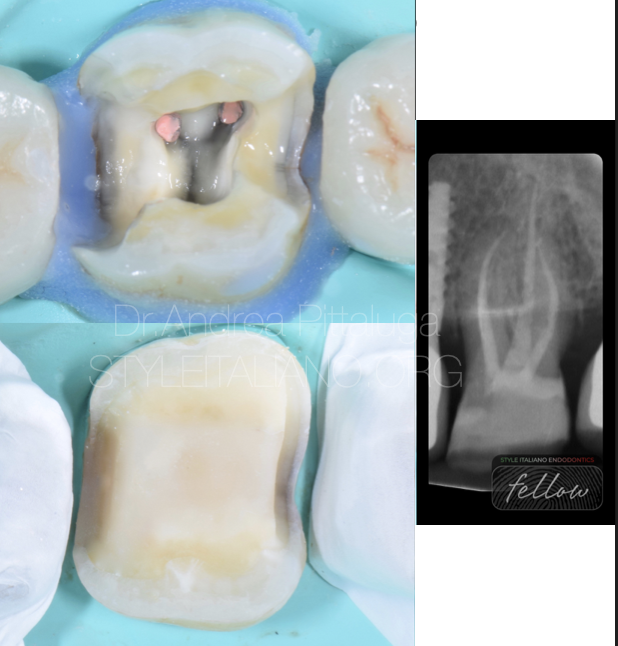
Fig. 3
Warm Vertical Condensation and immediate build up and prep
Immediate post-op X Ray
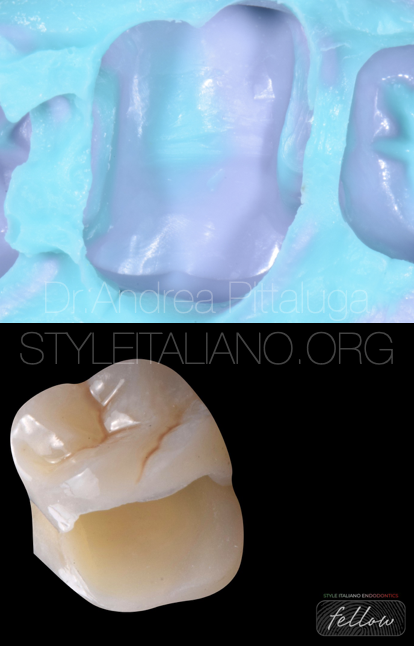
Fig. 4
Impression and ENAMIC overlay processing
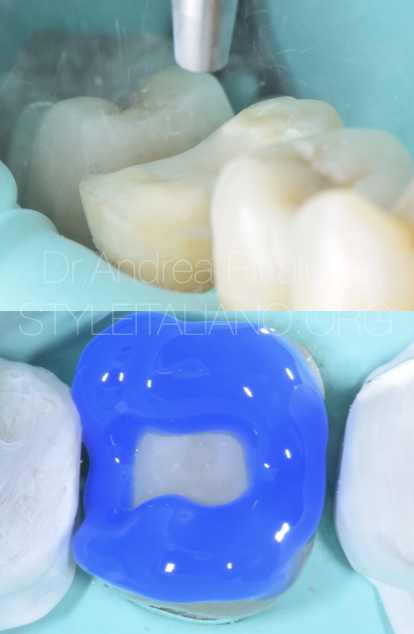
Fig. 5
Sandblasting (Al2O3) and selective etching
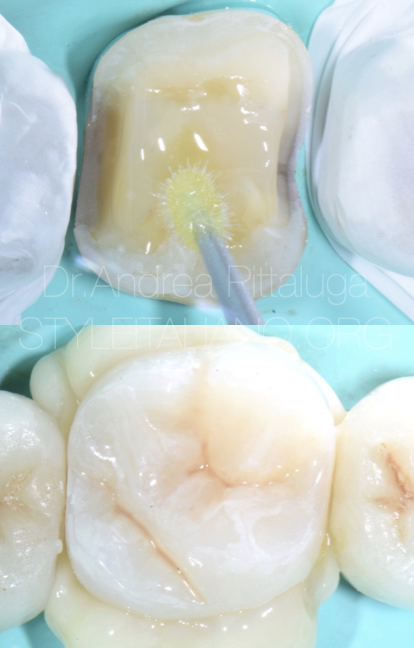
Fig. 6
Universal adhesive application and overlay bonding with heated composite
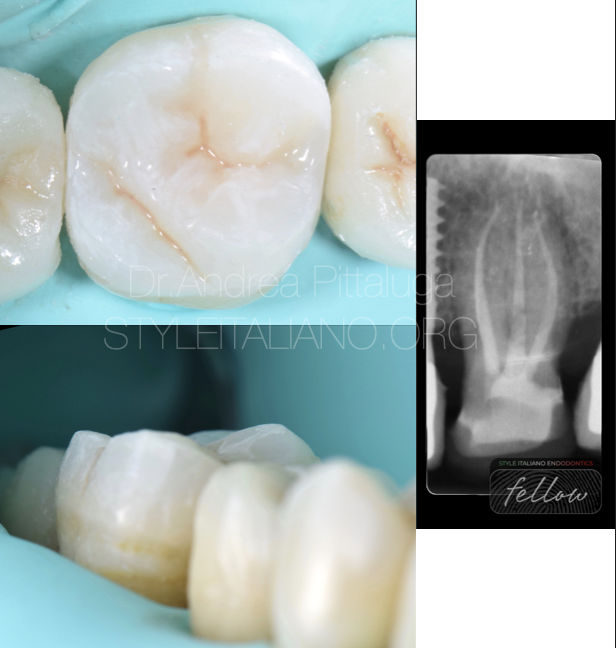
Fig. 7
Bonded overlay and polish

Fig. 8
Immediate post op and final X Ray

Fig. 9
About the author:
Andrea Pittaluga
Conclusions
TAER advantages:
Economics:
-Lower out-of-pocket costs
-Reduced delivery times
-Less number of appointments
-Faster monetization
Endodontics:
-Greater visibility during endodontic therapy
-Reduction of coronal interferences
-More stable landmarks
-More operational maneuver space
-Possibility to use shorter tools (21mm)
Disadvantages:
-Conservative (multiple) and non-endodontic isolation (disadvantage??)
-Longer first date
-Impossibility of immediate closure for endodontic reasons
Bibliography
1.An overview on rubber dam application in dental treatments
Huiru Zou et al. Zhonghua Kou Qiang Yi Xue Za Zhi. 2016 Feb.
. 2016 Feb;51(2):119-23.
doi: 10.3760/cma.j.issn.1002-0098.2016.02.011.
2.The secrets of isolation in the cervical area
David Gerdolle et al. Swiss Dent J. 2019.
. 2019 May 13;129(5):371-379.
3.Deep Margin Elevation: A Literature Review
Theodora Kalliopi Samartzi et al. Dent J (Basel). 2022.
Free PMC article
. 2022 Mar 14;10(3):48.
doi: 10.3390/dj10030048.
4.Cervical margin relocation in indirect adhesive restorations: A literature review
Jelena Juloski et al. J Prosthodont Res. 2018 Jul.
. 2018 Jul;62(3):273-280.
doi: 10.1016/j.jpor.2017.09.005. Epub 2017 Nov 15.
5.Influence of adhesive strategy on clinical parameters in cervical restorations: A systematic review and meta-analysis
Marcos Schroeder et al. J Dent. 2017 Jul.
. 2017 Jul;62:36-53.
doi: 10.1016/j.jdent.2017.05.006. Epub 2017 May 8.
6.Posterior indirect adhesive restorations (PIAR): preparation designs and adhesthetics clinical protocol
Federico Ferraris. Int J Esthet Dent. 2017.
. 2017;12(4):482-502.
7.Comparison of posterior indirect adhesive restorations (PIAR) with different preparations designs according to the adhesthetics classification.
Part 2: Effects on marginal quality
Federico Ferraris et al.
Int J Esthet Dent 2021;16:262–279


